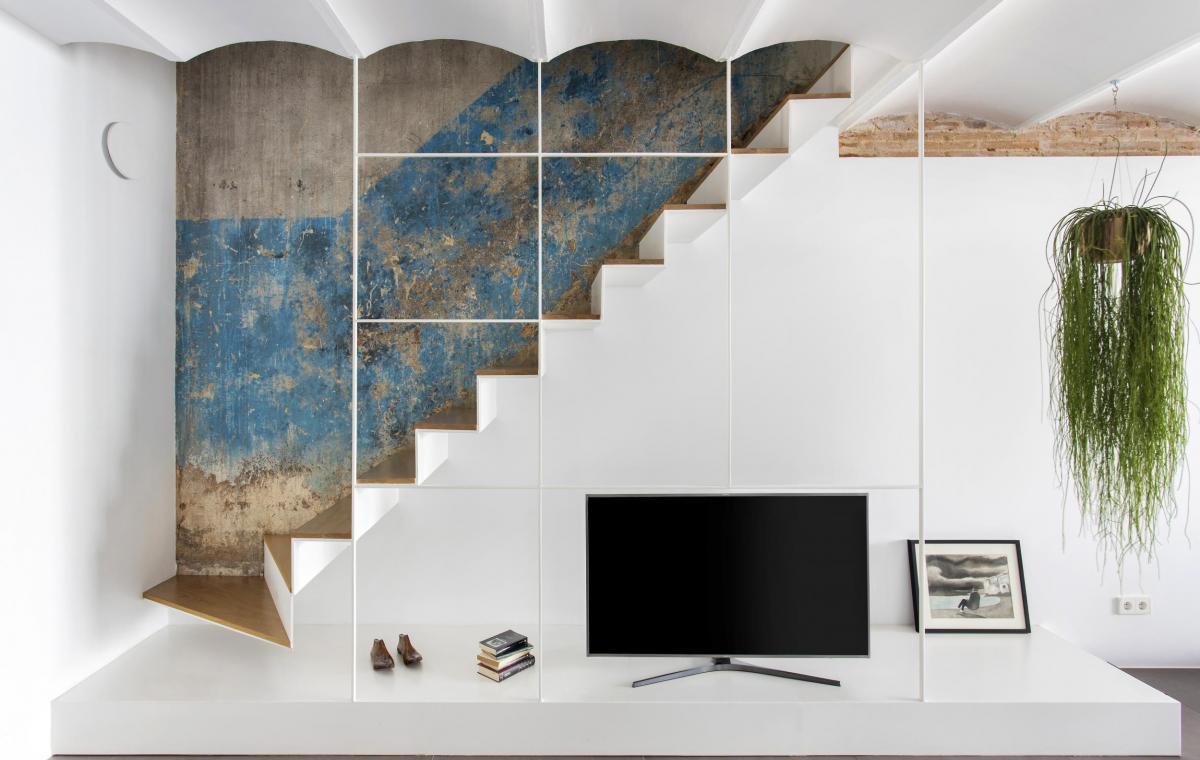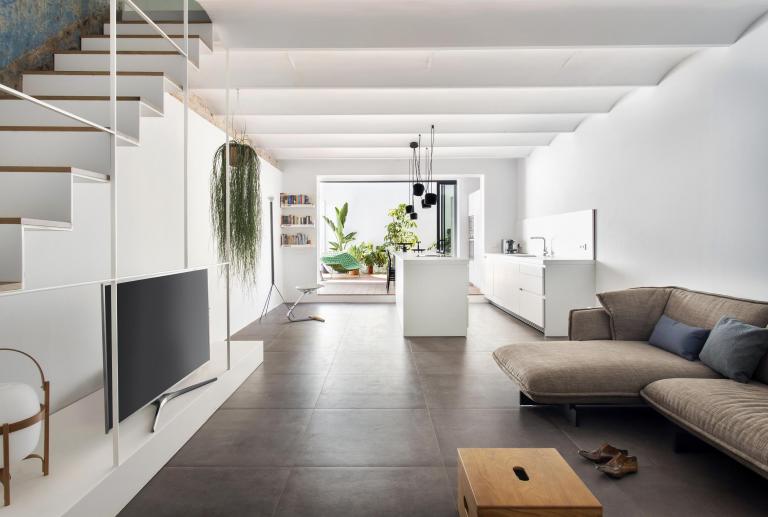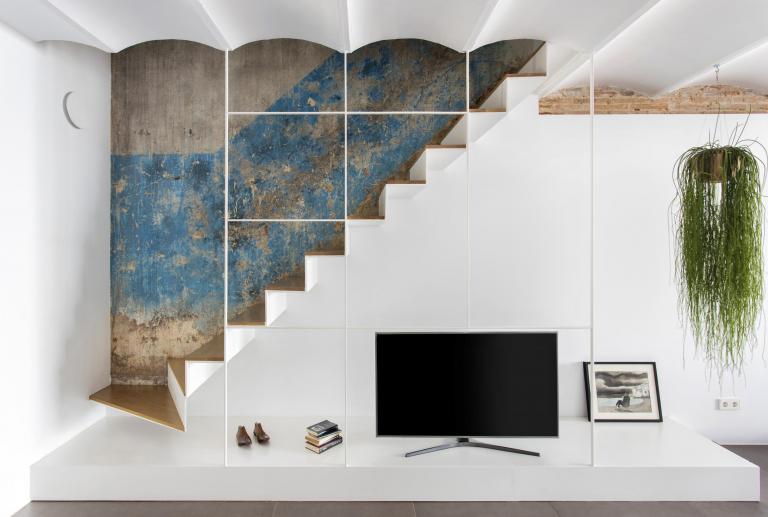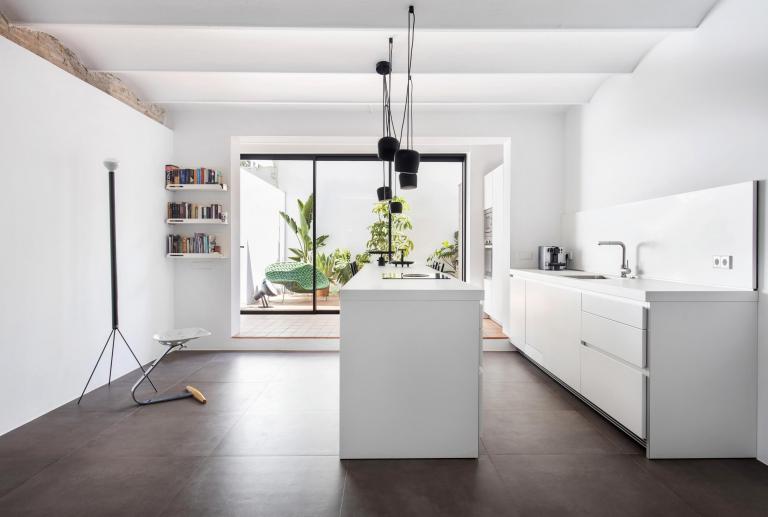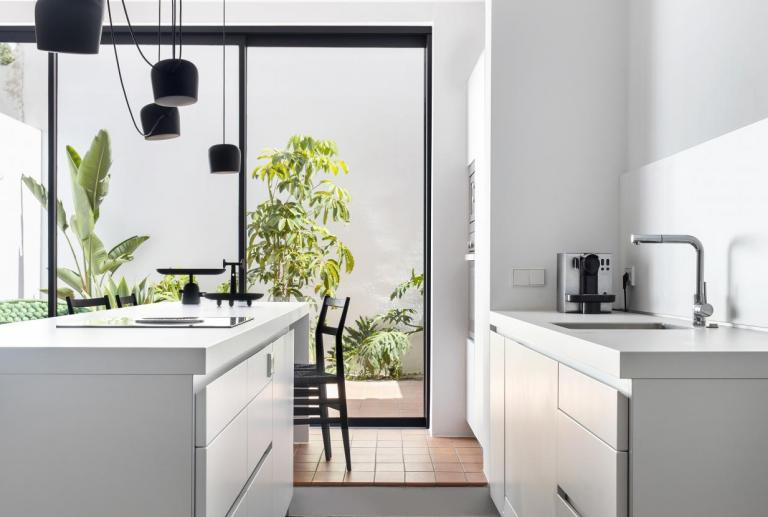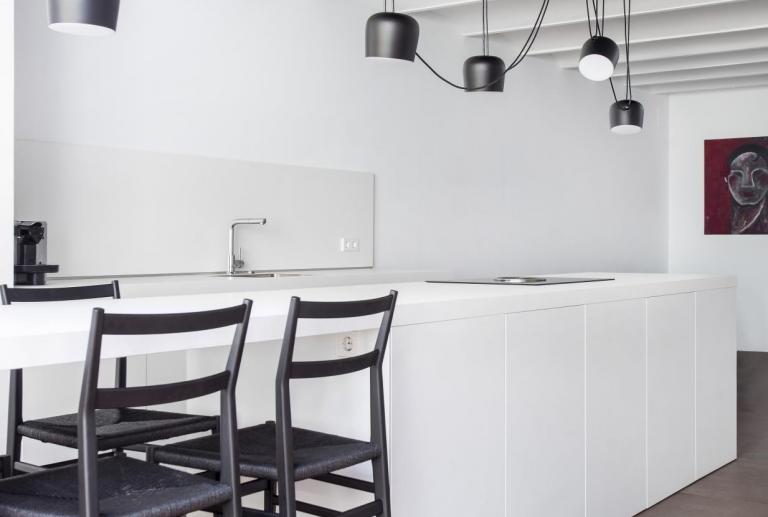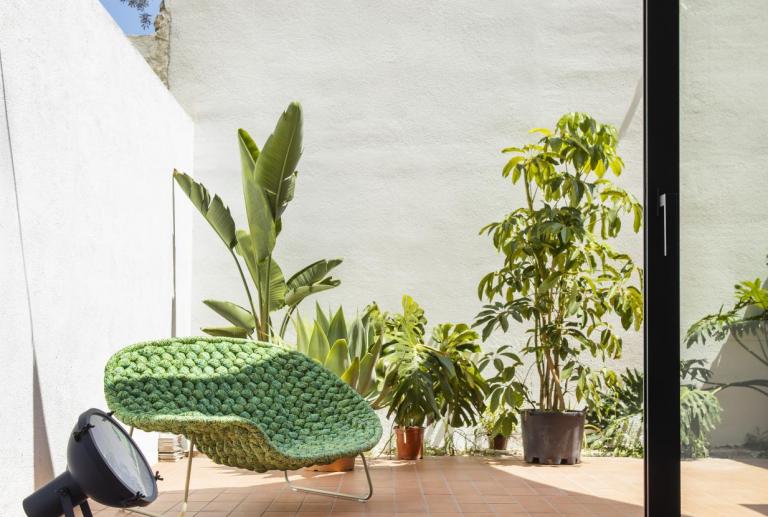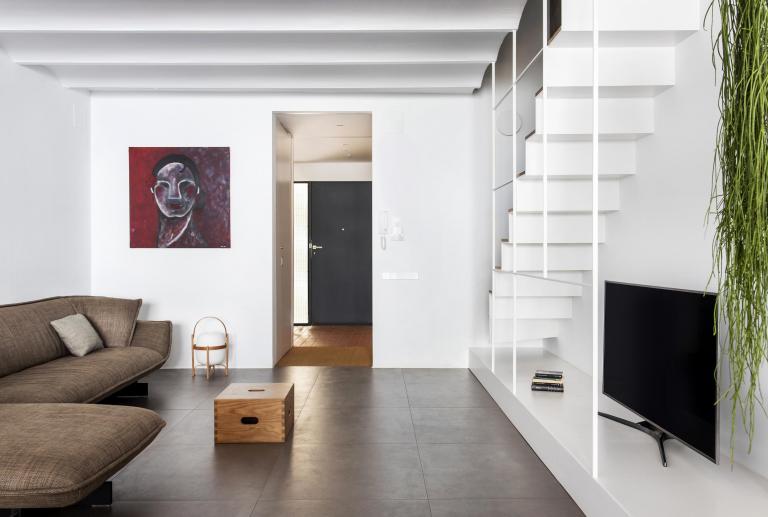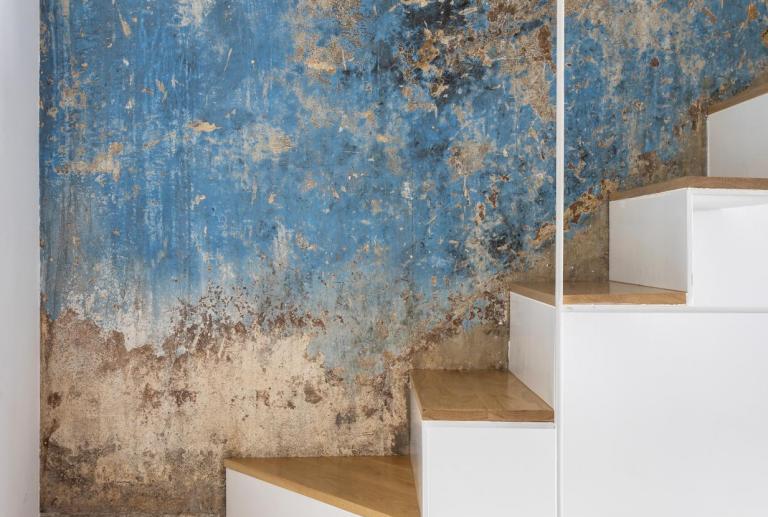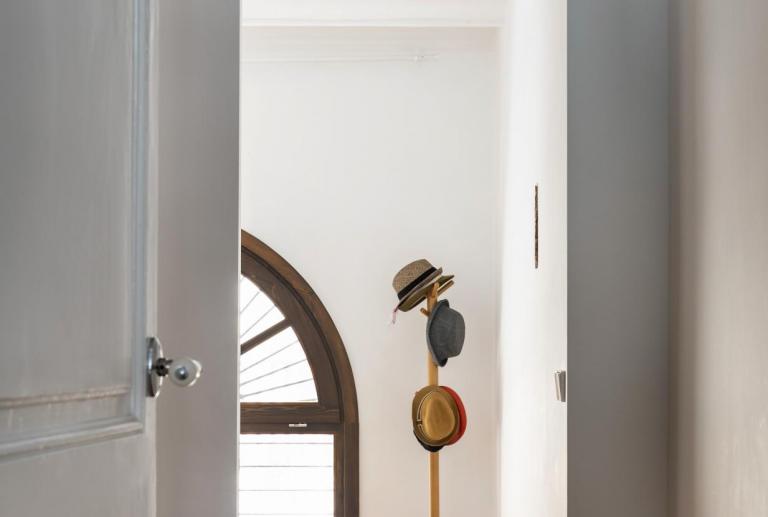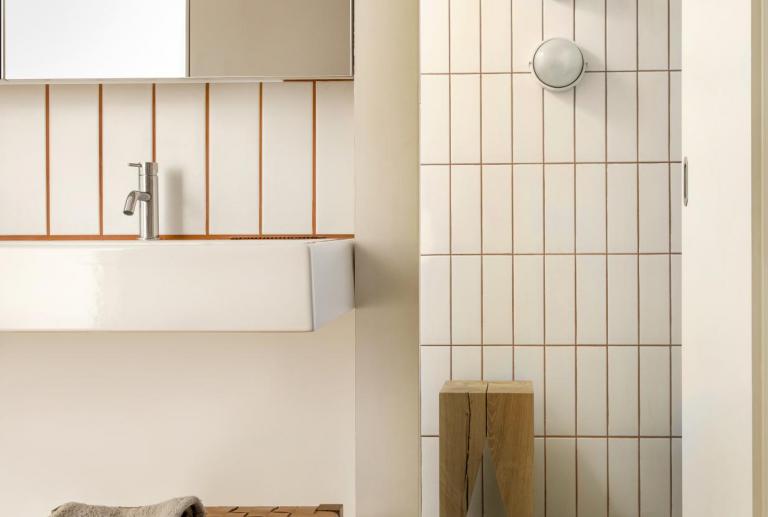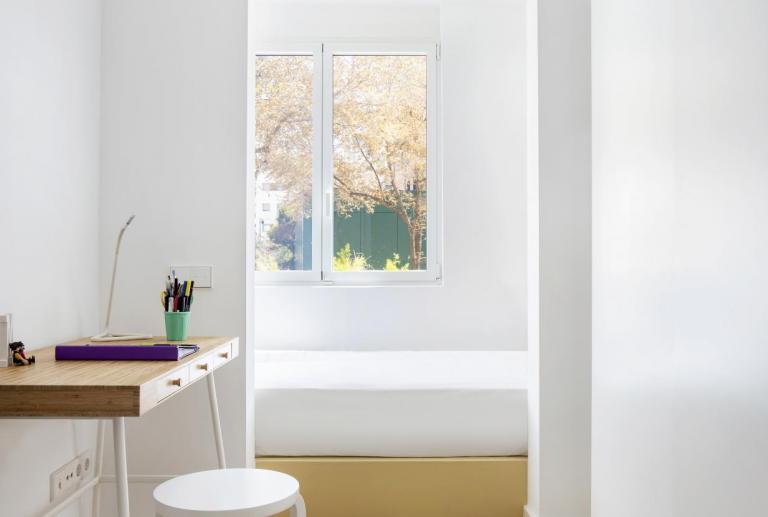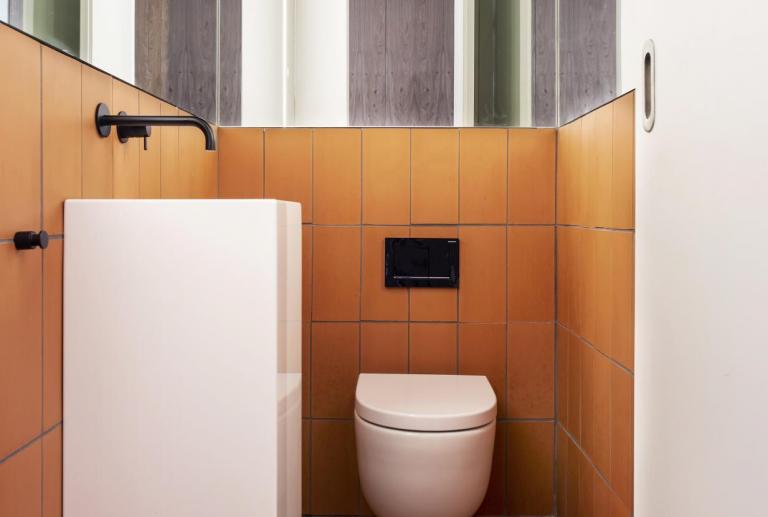From a former greengrocer's to a duplex in Poblenou / Barcelona
vilablanch studio signs the interior architecture project of this old fruit store in the Poblenou neighborhood of Barcelona, that has been transformed into an open, bright and functional duplex, maintaining the original beauty of the staircase wall.
In the old quarter of the Barcelona neighborhood of Poblenou, we find a place from the late 19th century that had been a greengrocer for many years. The ground floor served as a shop and warehouse, and the mezzanine floor as a home. The assignment that the clients made us was to transform it into a duplex home for their family.
This house belongs to the "Casas Saladrigas" complex, built by Pedro Molinas Coll in 1890. Composed of five residential buildings with a ground floor plus four floors with a unitary façade, which were created to accommodate the workers of the Saladrigas factory who came from outside the neighborhood.
Located on the ground floor of one of these buildings, the premises open onto a pedestrian street through a semicircular arch. The rear façade overlooks a large block's central courtyard that it shares with a library.
For the transformation of this space, the longitudinal axis of the floor has been strengthened and characteristic elements have been maintained, such as the wooden beams slab, the ceramic revolts, the original stairwell, the unevenness that separated the store area from the warehouse and the semicircular arch window.
On the interior façade, the roof of the last bay has been demolished to free the courtyard, which had been blinded in previous actions. A large window, with sliding doors, bathes the entire floor in natural light while allowing the patio to become an extension of the dining room on sunny days.
The original staircase, which was between two walls, has completely changed. A new white folded iron sheet staircase is placed, open to the living room. This stair contrasts with the existing wall in the background, where the passage of time can be read through the trail of layers of paint, scratches and chips that have been composing a magnificent abstract painting.
The new distribution bares the ground floor and inserts a box to house a toilet. This box allows the space to be zoned, creating a hall separated from the day area by a sliding door. At this level we find a large open space where the living room, kitchen-dining room and patio are connected. The toilet on this floor is lined with mirrors to give a feeling of spaciousness to a space of only 1m2.
On the first floor is the night area, with a large suite with bathroom and dressing room, two bedrooms and a second bathroom. The beds in the youth rooms are in a niche in the gallery that faces the interior façade, seeking to make the most of the light coming from the block patio. The beds are conceived not only for sleeping or resting, but also as relaxation areas where you can read, talk or listen to music.
In the materials used, white, terracotta and anthracite gray tones coexist. Whites are applied to walls, ceilings and a large part of the furniture, such as the one in the kitchen which takes on a special role. Anthracite gray is the color chosen for the porcelain, which is used on the floor of the living room and the kitchen in 80x80 cm pieces. Terracotta is found in the ceramic rack on the ground floor; This material is used on the floor located at the terrace, which enters the house creating a particular step in the kitchen; It is also applied in the hall and in the courtesy bathroom. On the first plant, an industrial parquet floor was chosen, seeking to give a special warmth to the space through the diversity of tones of the solid wood slats.
The interior architecture project transformed an abandoned greengrocer into a comfortable home with a fresh and contemporary style, which maintains the traces of its past in small brushstrokes along both floors. The result is an open, bright and functional duplex, in which each action has been well thought out.





